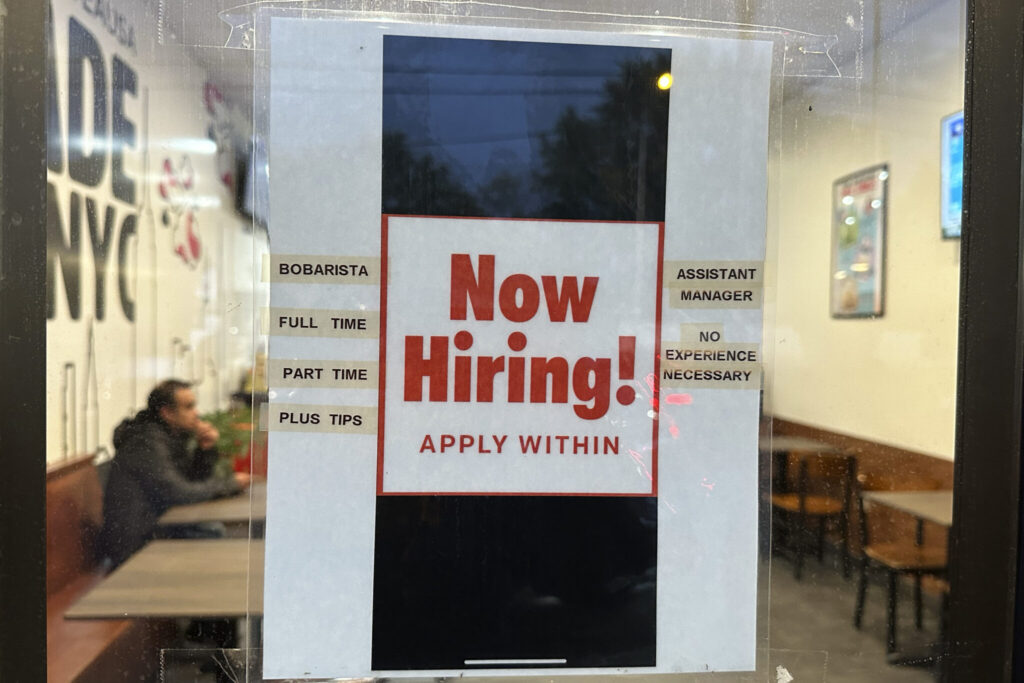The number of Americans filing new claims for unemployment benefits fell last week as the labor market continued to show few signs of a significant slowdown. Initial claims for state unemployment benefits fell 3,000 to a seasonally adjusted 217,000 for the week ended Nov. 4 from an upwardly revised 220,000 in the prior week, the Labor Department said on Thursday.
Quick Read
- U.S. jobless claims slightly decreased last week, suggesting the labor market is strong despite high-interest rates.
- Unemployment benefit applications dropped by 3,000 to 217,000 for the week ending Nov. 4.
- Jobless claims are a proxy for layoffs.
- The four-week moving average of claims rose slightly by 1,500 to 212,250.
- The total number of people receiving unemployment benefits was 1.83 million as of Oct. 28, the highest since April.
- The rise in “continuing claims” may indicate difficulties in finding new employment for those already jobless.
- The labor market remains resilient even as the Federal Reserve works to reduce inflation to its 2% target.
- Despite not changing rates last week, the Fed has increased rates 11 times since March 2022 to combat inflation.
- Consumer prices were up 3.7% in September year-over-year, a decrease from the 9.1% peak in June of the previous year.
- The U.S. economy experienced a surge in growth in the third quarter, driven by strong consumer spending.
- Job openings increased to 9.6 million in September, with layoffs decreasing.
- Private sector job growth slowed in October but still added 150,000 jobs, indicating ongoing economic strength.
The Associated Press has the story:
US jobless claims fall in latest week in still-strong labor market
Newslooks- (AP)
Slightly fewer Americans applied for jobless claims last week, further indicating that the labor market remains strong in an era of high interest rates.
Jobless claim applications are seen as representative of the number of layoffs in a given week.
The four-week moving average of claims, a less volatile measure, inched up by 1,500 to 212,250.
Overall, 1.83 million people were collecting unemployment benefits the week that ended Oct. 28, about 22,000 more than the previous week and the most since April.
Those “continuing claims,” analyst suggest, are rising because many of those who are already unemployed may now be having a harder time finding new work.
Still, the American labor market continues to show resiliency in the midst of the Federal Reserve’s campaign to get inflation back down to its 2% target.
Though Fed officials opted to leave the benchmark rate alone last week, the U.S. central bank has raised rates 11 times since March of 2022 in an effort to tame inflation, which reached a four-decade high in 2022. Part of the Fed’s goal is too cool the economy and labor market, which officials say should slow price growth.
In September, consumer prices were up 3.7% from a year earlier, down from a peak 9.1% in June last year. However, U.S. economic growth surged in the July-September quarter on the back of robust consumer spending.
The Labor Department reported last week that employers posted 9.6 million job openings in September, up from 9.5 million in August. Layoffs fell to 1.5 million from 1.7 million.
U.S. private employers slowed their hiring in October, adding a modest but still decent 150,000 jobs.
Last month’s job growth, though down sharply from a robust 297,000 gain in September, was solid enough to suggest that many companies still want to hire and that the economy remains sturdy.







